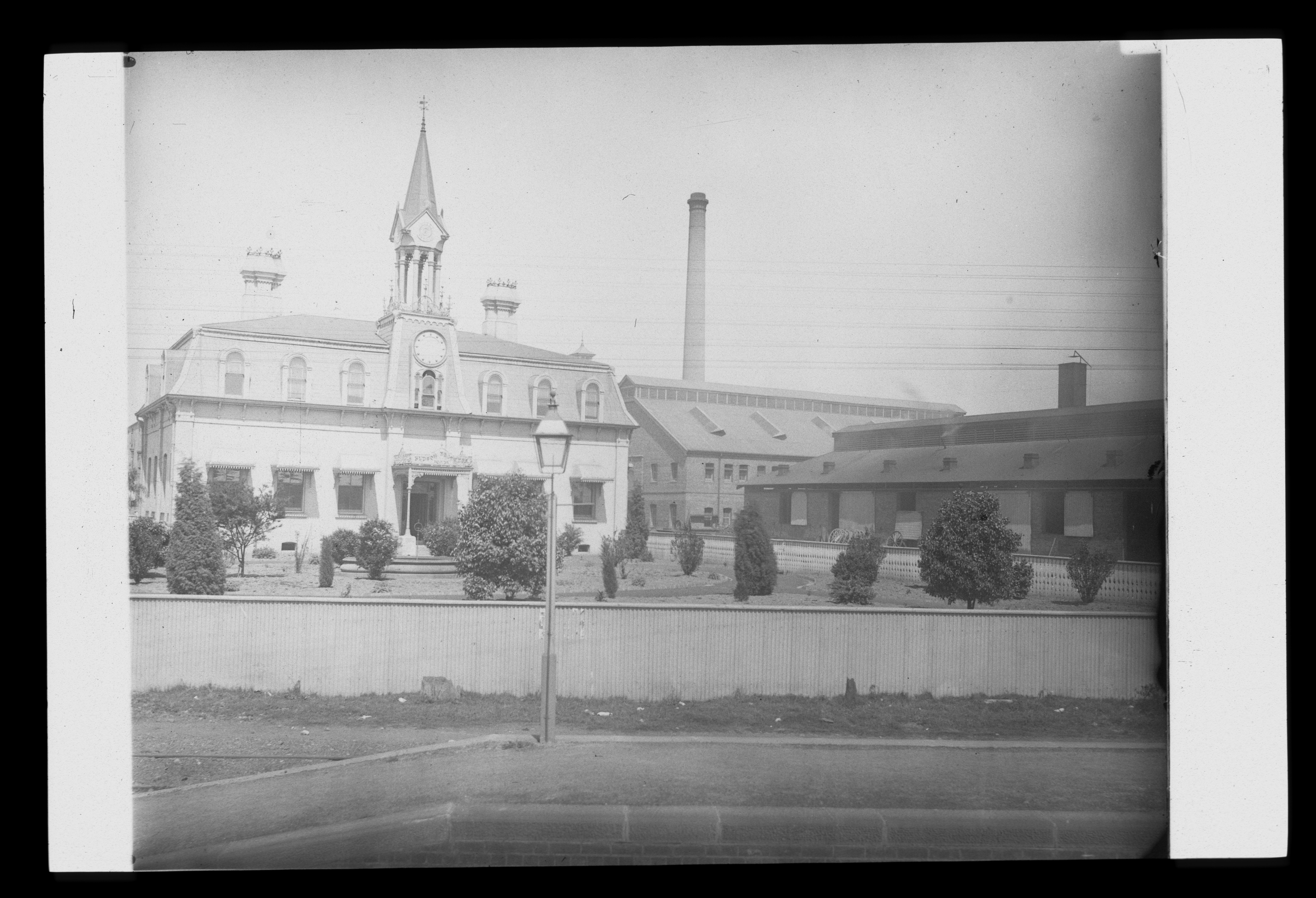Early years
It was built of bark and poles, and the floor was full of holes
Where each leak in rainy weather made a pool;
And the walls were mostly cracks lined with calico and sacks –
There was little need for windows in the school.
– ‘The Old Bark School’, 1897
A roving childhood
It’s no surprise that reality left its mark on Henry Lawson’s writing style – he’d had a pretty hefty dose of it growing up.
Born on 17 June 1867 in a tent on the goldfields of Grenfell, a town in western NSW, Henry Lawson spent his early years a nomadic victim of his father’s pursuit of gold.
Nils (Peter) Larsen, a Norwegian seaman, had jumped ship in Melbourne 12 years earlier, lured by stories of the Australian gold rush. In 1866, the same year gold was discovered in Grenfell, he married 18-year-old Louisa Albury. With Henry’s birth the following year, the first of four surviving children, he anglicised his surname to Lawson.
Peter’s search for gold saw the family move often around the Mudgee region until they settled there, in Eurunderee (also known as Pipeclay), in 1873. The place features in a few of Henry Lawson’s poems, as does the two-roomed timber house his father built for the family and the ‘old bark school’ he attended.
A very short education
The man who would become one of Australia’s most famous and loved writers in fact only received three years of formal schooling.
There wasn’t even a school when the Lawsons moved to Eurunderee – it was Louisa Lawson who pushed for one to be built. And even though young Henry only attended the Eurunderee Provisional School for a few years, he had a soft spot for the ‘old bark school’, writing about it, visiting it years later and even entering an impromptu poem in the visitors’ book.
His father’s building work took him away often, so young Henry had to stay home and help his mother run the family selection.
Louisa, an impressive figure throughout Lawson’s life, also ran the local post office in her husband’s name and no doubt inspired Lawson’s later stories about the strength of women living in the bush.
A shy boy, Henry was bullied at school and also suffered an ear infection, which, by the time he reached 14, had cost him most of his hearing. If there could be any upside, it’s that the condition contributed to his creativity – Lawson later claimed that his deafness
'was to cloud my whole life, to drive me into myself, and to be, in great measure, responsible for my writing.'
Separate ways
In 1880 Lawson went to work with his father, enjoying the camaraderie of working men that he would later capture so well in his writing, but also discovering a taste for alcohol, which helped him overcome his shyness.
In 1883, his parents’ marriage ended and Louisa moved to Sydney to find work, Henry and his siblings joining her. They lived in Phillip Street and Henry commuted daily by train to the Hudson Bros Ltd railworks at Clyde, where he’d got a job as a carriage painter. He attended night school to improve his education, but juggling both proved too difficult and he failed his university entrance exams several times.
The formidable Louisa urged her son to greater endeavours. A poet and author in her own right, it was she who’d pushed for the Eurunderee school to be built, and who now encouraged Henry to start writing poetry and short stories.
You were born on Grenfell goldfield - and you can’t get over that
(‘Said Grenfell to My Spirit’, 1911)
Early years – memories and memorials
People behind the prose: His Father's Mate
It’s no surprise that quite a few of Lawson’s works are set on the Australian goldfields – moving around with the family while his father pursued gold must have had a profound effect on him. His first published short story, His Father’s Mate, which appeared in the Bulletin on 22 December 1888, tells a poignant story of young Harry Mason, nicknamed ‘Isley’, who is the ‘island’ in the ocean between his father and mother (deceased). Isley helps his father work their claim, winching buckets of mud to the surface, ever on the lookout for that elusive fleck of gold, before tragedy strikes. The story reveals a moving picture of father and son, and a love of humanity that is central to Lawson’s writing.
People behind the prose: The Drover’s Wife
‘She has few pleasures to think of as she sits here alone by the fire’, wrote Henry Lawson in his famous short story The Drover’s Wife (1892). Isolated for long periods of time while her husband is away, the wife in the story has fought a bushfire, a flood, intruders, illness, disease and death, and now she faces a snake as she tries to protect her family. Throughout his life, Lawson had many opportunities to observe the plight of women living on the land, but surely one of the earliest must have been watching his own mother, Louisa, as she ran the family selection while her husband was away working. Stories such as The Drover’s Wife are a tribute to the strength of women like Louisa, left alone to defend their properties against the dangers of the bush closing in on them.
This story has been developed with the support of the State Library of NSW Foundation.
We would like to acknowledge the generosity of Curtis & Massey-Greene Families in recognition of "Faces In The Street" - St Vincent's Urban Mental Health Research Institute




